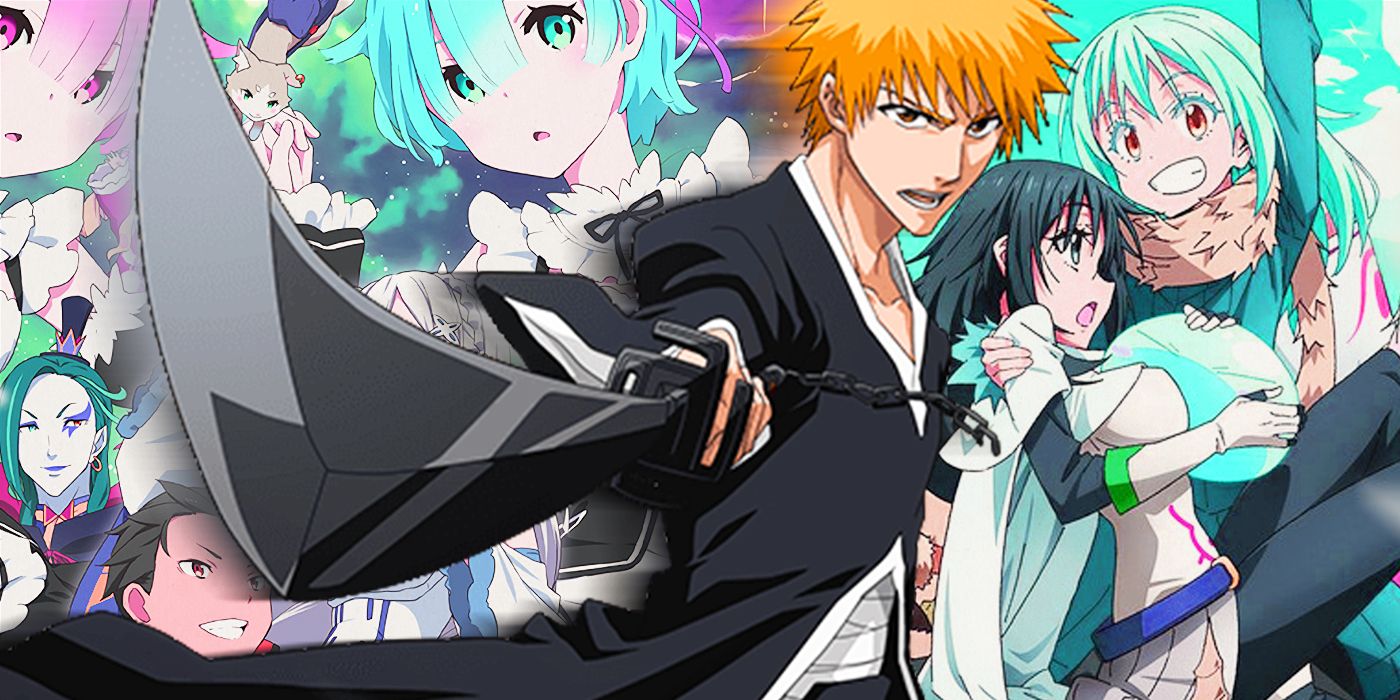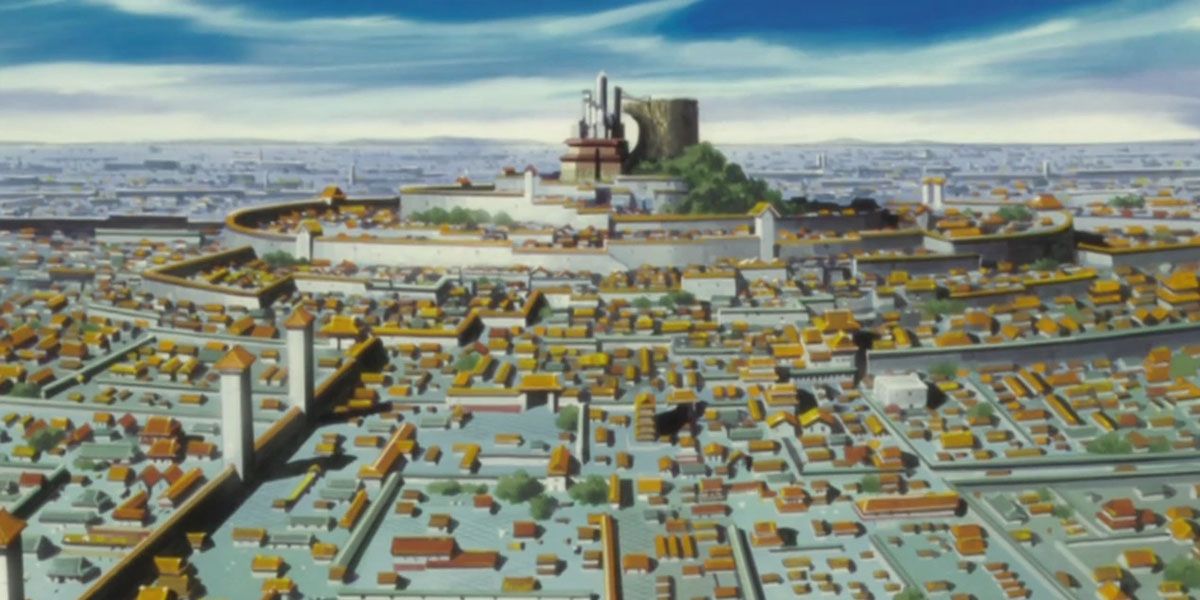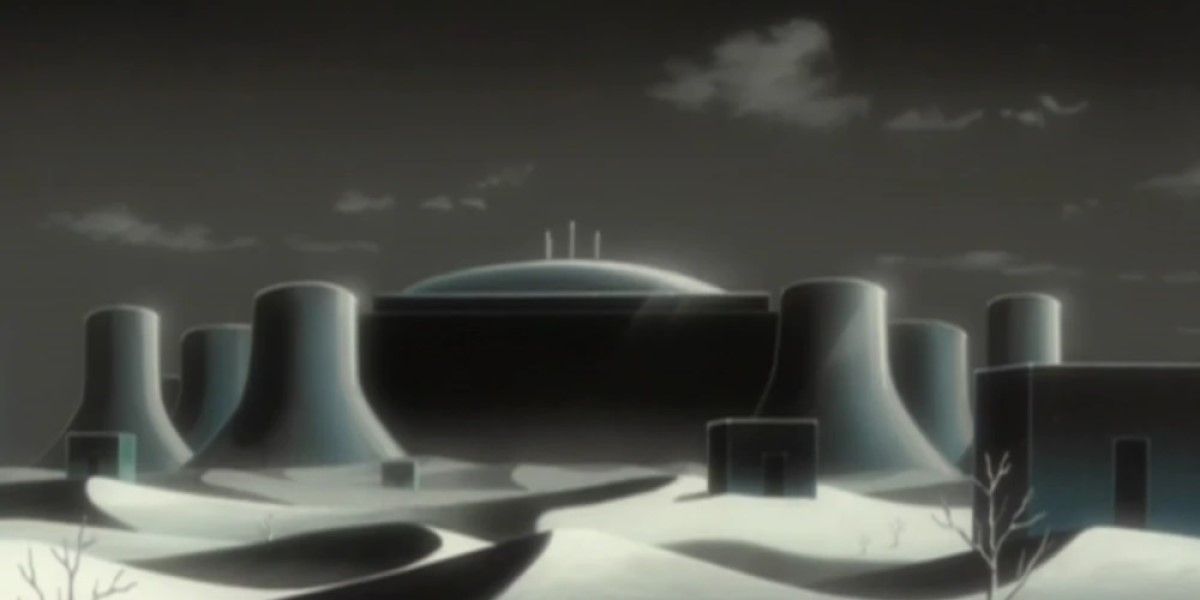Tite Kubo's hit anime/manga franchise Bleach tells the tale of Ichigo Kurosaki and his quest to protect his friends and family from all manner of monsters -- from soul-eating Hollows to the Arrancar minions of Sosuke Aizen, and even a hidden empire of Quincy, the Wandenreich. At first, Ichigo's quest is a "monster hunter" paradigm in his hometown of Karakura, but he later becomes something of an isekai hero.
Bleach is not a bonafide isekai series, but it does borrow elements from that genre to help it stand out from contemporaries such as the Naruto franchise. How does Bleach utilize the best parts of isekai so resourcefully while staying true to itself?
New Stakes, New Setting: The Soul Society & Rukia's Sentence
Early on in Bleach, Ichigo fought as a substitute Soul Reaper to slay dreadful Hollows, while the Soul Reaper Rukia Kuchiki guided him along and watched his back. However, Rukia had broken Soul Society law by giving Ichigo her powers, and her brother, Captain Byakuya Kuchiki, valued the law more than his foster sister's life (for now). Ichigo was powerless to resist when Byakuya and Renji captured Rukia and returned her to the Soul Society, so Ichigo trained with Kisuke Urahara to reinvent himself, invade the Soul Society, and get his friend back.
This was Bleach's first major foray into isekai territory, proving that Ichigo was fighting new enemies for a new purpose. No longer was he the resident Hollow slayer -- the series couldn't sustain itself on that alone for much longer. Visiting Rukia's world, the Soul Society, introduced dozens of new characters and set Sosuke Aizen's master plan into motion when he obtained Rukia's Hogyoku. None of this would have happened in Karakura Town. Bleach needed to become an isekai series for Ichigo to rescue Rukia and confront the main villain.
Many anime fans agree that the Soul Society arc is Bleach's strongest, not only for its classic fight scenes but its lovely isekai setting. Better yet, Ichigo wasn't trapped there forever. He had the option to return home via a Senkaimon gate, neatly ending this story arc and setting the stage for the next one.
Hueco Mundo: The World Of Monsters
Starting with the Arrancar arc, Bleach's story balanced isekai and reverse-isekai elements more than ever -- such as when Rukia and an entire team of Soul Reapers arrived in Karakura Town. The Hitsugaya advance team drove a reverse-isekai story when Rangiku Matsumoto stayed at Orihime's house until the Arrancars attacked and captured he right under Ichigo's nose.
It was time for another otherworldly adventure, this time in Hueco Mundo -- the unforgiving homeworld of Hollows -- where Orihime had been taken prisoner at the massive fortress of Las Noches. In this story arc, Ichigo and his friends faced the mighty Espadas, from Aaroniero Arruruerie to Ulquiorra Cifer, and only the timely intervention of Soul Reaper Captains saved them from certain doom. Eventually, the story moved its venue to a perfect replica of Karakura Town, where the heroes and villains clashed one last time.
Bleach's overall premise about spirits and the afterlife easily allows isekai and reverse-isekai elements to be organically integrated into the plot. As shown in the first season and early in the Arrancar arc, the idea of Soul Reapers visiting Earth to slay Hollows and protect humans is a ripe stomping ground for reverse-isekai action. Tite Kubo smartly kept this aspect restrained, since the real action took place in the Soul Society and Hueco Mundo. He only included as much reverse-isekai as the story called for and made the most of it, for the sake of humor and drama alike.
Spirits such as Hollows and the chained jibakurei linger on earth, but there is also a heavenly afterlife guarded by Soul Reapers -- that too is a perfect recipe for isekai adventures. Bleach included its own organic ways -- Senkaimon gates and Garganta portals -- for people, Hollows and Soul Reapers alike to travel to and from these realms, removing the need for silly or contrived plot devices such as "truck-kun." Ichigo can simply borrow these methods to visit the Soul Society or Hueco Mundo and return home. While Ichigo fights many battles in supernatural realms, his life is not entirely dictated by these adventures. He's not stuck in these worlds like many isekai heroes are, and thus Ichigo avoids the open-ended nature of isekai to reach a solid conclusion instead.
Bleach's ending was far from perfect, but it neatly closed the book on Ichigo and his friends' adventures, rather than having the protagonist wander off into the isekai sunset with no clear resolution in sight. When Bleach's isekai adventures are over, they're over.



